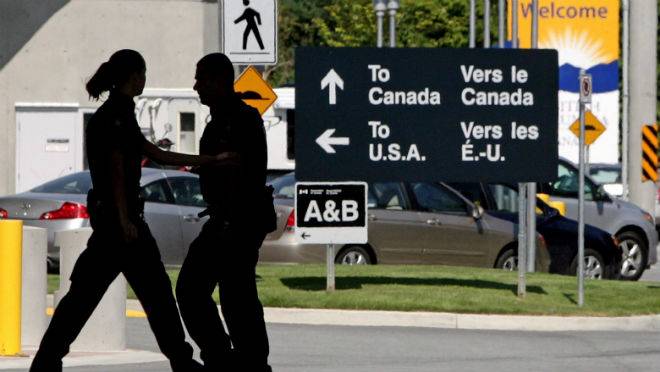051 8439995, 042 35911332

Canadian Immigration: The idea of open borders strikes fear into the hearts of many, but it need not be that way. On this Open Borders Day — an international celebration each March 16 — we have an opportunity to think outside the box when it comes to freedom of movement.
A pivotal question of the debate is whether government officials of a large nation such as Canada have the will, incentives, and capacity to manage movement in a manner that serves constituents.
Ongoing events testify that such faith in central planning is misplaced, and that their intervention wastes taxpayer dollars and impedes economic growth.
In the words of economist Bryan Caplan, immigration restrictions are “solutions in search of a problem” and the new Electronic Authorization System is a typical example.
Slated for March 15 implementation but delayed, the system mandates that visa-exempt visitors arriving by air must apply online in advance and get pre-approval, including those merely transiting through Canadian airports.
One problem is that immigration officials still don’t know how much in advance: maybe minutes, maybe 72 hours, maybe more. Nor have they demonstrated the security gains of this layer of bureaucracy, since their secretive no-fly list has blocked such dangerous characters as six-year-olds, but not a single documented terrorist.
The pen pushers behind this new make-work scheme also get uncomfortable with anyone who doesn’t fit into their boxes, so they discriminate against Canadian citizens of dual nationality. Akin to communist Cuba, dual citizens will only be permitted entry on a Canadian passport.
The threat we are now “protected” from includes my own siblings, who live in New Zealand and have traveled to Canada many times on New Zealand passports.
Federal officials are earning cushy, bloated salaries for tightening the screws on people from trusted, secure nations, and even citizens, but that is just the start of their incompetence.
Citizenship and Immigration Canada takes $1.6 billion from taxpayers, $6,400 per new immigrant, and their knack for selecting the best and brightest sees each newcomer generating an annual fiscal burden of $5,329. That is an immigrant drain on taxpayers of $30 billion, as estimated by the Fraser Institute in Vancouver.
There is a better way: open borders, done smart.
People do hold legitimate concerns about open borders, which need to be addressed. That includes the noted burden on taxpayers and changing voter demographics, which could tilt against Canada’s liberal values.
The good news is that simple policies can address these directly, without having to resort to restrictions on movement.
In the case of the fiscal burden, new arrivals could come to work and live but simply be ineligible for specific welfare benefits or subject to a surcharge. The same distinction could go for voting, maintaining a transparent and rigorous naturalization process for political participation.
Both these particular concerns point to the capacity of new arrivals to integrate.
The truth is that millions of employers and members of the community will always do a better job of such planning and welcoming than a few legislators in Ottawa.
Consider the case of Syrian refugees. Language proficiency is a key marker of employment prospects, and fewer than 10 per cent of the government-sponsored arrivals speak either French or English.
They can look forward to waiting lists that reach beyond a year for language classes, while privately sponsored refugees are much more likely to speak one or both official languages.
Freedom of movement is not the problem. Canada’s mishandling of it is.
For more information about Canadian Immigration programs, please visit the company’s site at http://www.immigrationexperts.pk
Contact :
Immigration Experts
Tel: +92 308 5857777
E-mail: wecare@immigrationexperts.pk
